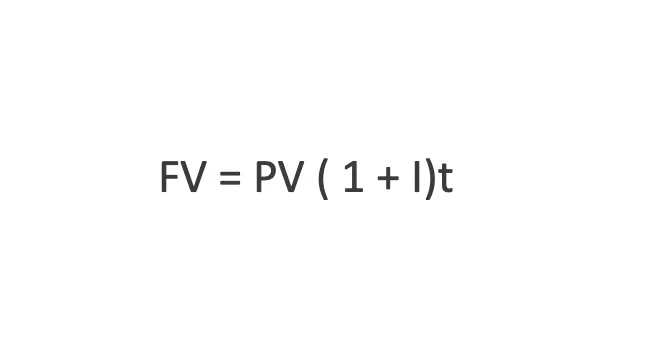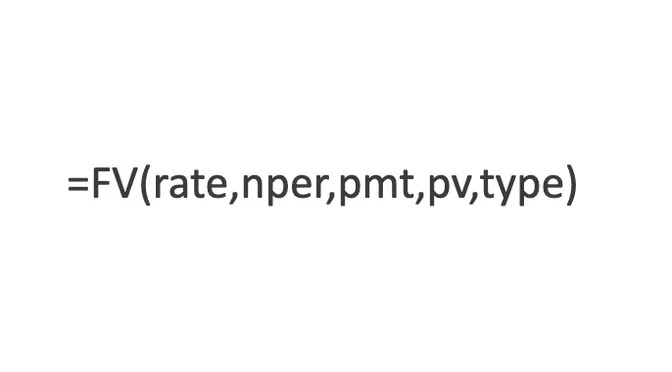The calculation of the future value of an investment is one of the most basic calculations in finance. It allows you to determine the value of an investment in the future. The future value calculation is based on the basic principle of time value of money that states a dollar in your hand today is worth more than a dollar to be received tomorrow.
The future value of a single sum of money is important to businesses because it allows for the calculation of the rate of return on an investment.
What is Future Value (FV)?

Future value (FV) refers to a method of calculating how much the present value (PV) of an asset or cash will be worth at a specific time in the future.
The Importance of Future Value
One dollar put into a savings account today might be worth more than one dollar a year from now. How does that work? The bank pays interest and your dollar earns money for that year. Thus, a dollar deposited today has a higher future value – the same is true for investments.
Future value is an important calculation because it tells investors and individuals how much an investment made today (present value) will be worth in the future.
Limitations of Future Value
Although calculating future value has its benefits, future value does not include the following:
- Adjustments for inflation
- Fluctuating interest rates, or
- Fluctuating currency values
Each of these elements will affect the true value of money (or assets) in the future. It’s important to remember that future value is an estimation, not a guaranteed metric.
What Is the Future Value of an Investment?
The future value of a lump sum of money allows a small business owner to evaluate an investment, taking into account the current market rate of interest and the amount of time the investment will be held.
For example: You deposit 1 Lakh in the bank and the bank applies interest to your deposit every quarter. While you leave your money on deposit, that 1 Lakh will continue to grow based on the interest rate on your deposit and the term of the loan.
If instead, a business owner deposits to a bank account and, subsequently makes a regular deposit on an ongoing basis, Those payments are called an ordinary annuity.
Tips : Another term for future value is compounding. Compounding occurs when you earn interest on top of interest.
How Do You Calculate the Future Value?
There are three methods you can use to calculate the future value of an investment. The first method is to use the mathematical equation. The other two methods are also based on the equation since it is the basis for the principle of time value of money.
1. Using the future value formula:

where:
PV = the present value of the investment or the beginning value
FV = the future value of the investment after t or the number of periods the deposit is invested
I = the interest earned on the investment
t = the number of time periods in months the deposit remains invested
Here is an example using the future value formula:
FV = ( 100 + 5 ), or 105
If you deposit 100, at the end of one year with the interest rate of 5% and if the number of years is 1 year, then you can read the formula as follows:
"The future value (FV) at the end of one year equals the present value (100) plus the value of the interest at the specified interest rate (5% of 100 or 5)."
How Future Value Works
To determine the value of your investment at the end of two years, you would change your calculation to include an exponent representing the two periods:
FV = $100 ( 1 + 0.05 )² = $110.25
The continuing periods mean you continue the calculation for the number of payment periods you need to determine.
2. Future Value Using a Financial Calculator
Incidentally, you can use this formula with any calculator that has an exponential function key.However, using a financial calculator is better because it has dedicated keys corresponding to each of the four variables you'll be using, thereby speeding up the process and minimizing the possibility of error. Here are the keys you will press:
- Press N and 2 (for 2 years' holding period)
- Press I/YR and 5 (for the interest rate of 5%)
- Press PV and -105 (for the amount of money we are calculating interest on in year 2)
Take note that you need to set the investment's present value as a negative number so that you can correctly calculate positive future cash flows. If you forget to add the minus sign, your future value will show as a negative number.
Press PMT and PMT (there are no payments beyond the first one)
Press FV, which returns the answer of 110.25
3. Future Value Using a Spreadsheet
Spreadsheets, such as Microsoft Excel, are well-suited for calculating time value of money problems. The function that we use for the future value of an investment or a lump sum on an Excel spreadsheet is:

The "rate" is the interest rate, "nper" is the number of periods, "pmt" is the amount of the payment made (if any, and it must be the same throughout the life of the investment), "pv" is present value, and "type" is when the payment is due. The payments due value is either a one (beginning of the month), or zero (end of the month).
To use the function in the worksheet, click on the cell you wish to enter the formula in. Enter the formula below and press enter.
=FV(0.05,1,0,-100,0)
You should receive a value of 105.
Future Value and Financial Planning
Future value allows you to analyze an investment’s possible return. You can also use future value to help build a savings plan for a specific amount in the future.